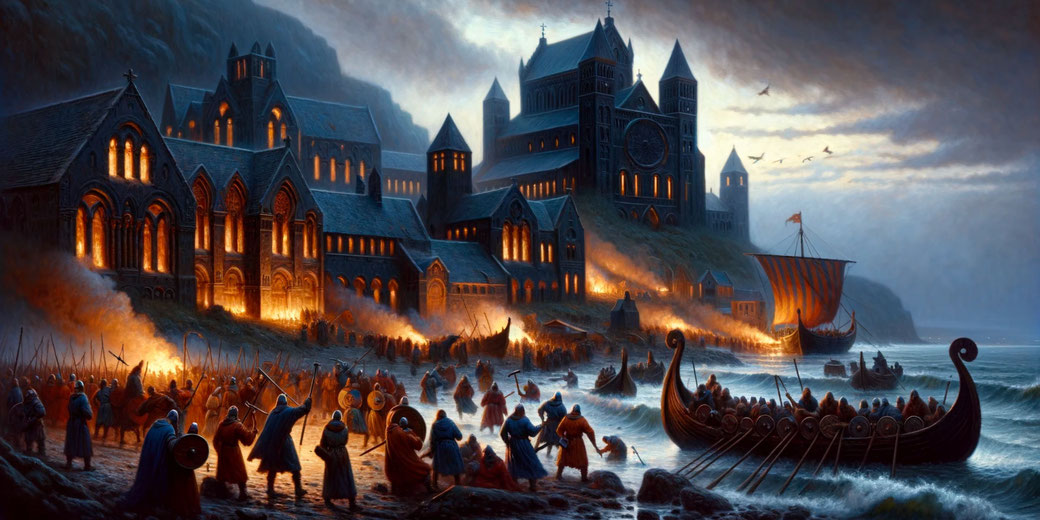Arrival of the Vikings Sources

Source 1
"[In the year] 793 … [dreadful warnings] came over the land of the North-humbrians, and miserably terrified the people; these were excessive whirlwinds, and lightnings ; and fiery dragons were seen flying in the air. A great famine soon followed these [events]; and a little after that, in the same year, on the 6th before the [15th] of January, the ravaging of heathen [Viking] men [sadly] destroyed God's church at Lindisfarne through [stealing] and slaughter."
Reference:
Unknown Authors. (c. AD 900). Anglo-Saxon Chronicle.
Context Statement:
The Anglo-Saxon Chronicle is a record of historical events in England, written in Old English during the time of the Anglo-Saxons. Unnamed monks probably wrote most of the entries, beginning in the 9th century AD until, 1154. The authors were alive during the events they describe.
Copyright Information: Public Domain
Source 2
Reference:
Oseberg Ship. (AD 824). Viking Ship Museum in Norway.
Context Statement:
An image the Oseberg ship from the Viking Ship Museum in Norway. This ship was found as a part of a Viking burial in Norway that dated from AD 834.
Copyright Information:
Wikimedia Commons: Creative Commons Attribution-Share Alike 3.0 Unported
Source 3
"[Some] men asked [the warrior] Halfdan to attack [the Viking Beserker] Hardbeen and his champions man by man; and he not only promised to fight, but assured himself the victory with most confident words. When Hardbeen heard this, a demoniacal frenzy suddenly took him; he furiously bit and devoured the edges of his shield; he kept [swallowing burning] coals [from the fire]; he snatched live embers in his mouth and let them pass down into his [stomach]; he rushed through the perils of crackling fires; and at last, when he had raved through every sort of madness, he turned his sword with raging hand against the hearts of six of his [own best warriors]. It is doubtful whether this madness came from [desire] for battle or natural ferocity. Then with the remaining band of his champions he attacked Halfden, who crushed him with a hammer of wondrous size, so that he lost both victory and life; paying the penalty both to Halfdan, whom he had challenged, and to the kings whose offspring he had violently ravished."
Reference:
Saxo Grammaticus. (c. AD 1204). Saxo Grammaticus. (Translation by Elton, O. (1905). The Nine Books of the Danish history of Saxo Grammaticus, Vol. II. Norrœna Society, pg. 146).
Context Statement:
Saxo Grammaticus was a Danish historian who wrote the Gesta Danorum, which was the first full history of Denmark. This section of his work describes one of the feared Viking warriors known as 'beserkers'.
Copyright Information: Public Domain
What do you need help with?
Download ready-to-use digital learning resources
Copyright © History Skills 2014-2025.
Contact via email
With the exception of links to external sites, some historical sources and extracts from specific publications, all content on this website is copyrighted by History Skills. This content may not be copied, republished or redistributed without written permission from the website creator. Please use the Contact page to obtain relevant permission.






